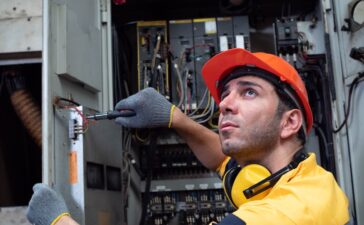In the recent past, sustainability goals have be highlighted as schools change to meet present day need of learning institutions. Although one may strongly believe that he or she has a good sense of style, organization, and coordination ability, there is usually one main area that is left out when planning and creating an interior accent – furniture choices. Conventional school furniture is partly toxic and becomes an agent of environmental pollution, and the learning resources do not address the students’ individual differences.
Think of a class surrounded by colorful and environmentally friendly tables that foster creativity and teamwork while being environmentally friendly. Green educational furniture is not a fad; it is, or should be, considered for the health of students and the planet. Through unique styles prominent in the aspect of sustainability Australia’s schools can effectively become platforms of development and responsibility.
How about moving through some ideas of the ways sustainable educational furniture solutions may help students, teachers, and even our Earth?
The Importance of Sustainable Furniture in Schools
Education through sustainable furniture facilitate pupils to develop environmentally friendly attitude towards school life. Credits: When the learning environment supports sustainable practices the students of the learning institutions become environmentally conscious individuals.
Discover a wide range of innovative educational furniture Australia, designed to create engaging and adaptable learning environments for students of all ages.
Also, the use of sustainable materials leads to better indoor air quality than a building produced with conventional materials. Conventionally designed furniture products have been known to release volatile organic compounds and formaldehyde fumes affecting the students’ health and focus. Hence schools’ adoption of sustainability measures generate safer facilities for the learners.
Infact, sustainable educational furniture can also bring long term gains when it comes to spending. Sturdy and long-lasting designs developed from recyclable materials enable the elimination of constant substitution and reduced mounting expenses in the long run.
The incorporation of sustainability in schools contribute to the formulation of schools that in future people will be able to conserve resources. This is a mindful approach which fosters creativity at the same time propels the world into leaving it in a livable state for future generations.
Common Issues with Traditional School Furniture
When it comes to the student needs, traditional school furniture mostly lacks the ability to fulfill the requirement. Furniture is fixed and uniform to restrict or encourage student generalization of the learning process not considering variances in learning modalities and sizes.
Some products are not durable hence frequent replacement All the pieces have their common issue in that they do not last long. They do so not only to the detriment of company budgets, but they also leech off the environment.
Often, the static designs do limit creativity and cooperation between the learners. Fixed seating negates cross sectional seating arrangements where students are grouped to accord with set learning preferences thereby limiting their actual interaction during set group work.
In addition, painted wooden parts of school furniture, or other furniture traditionally made from wood, can emit chemicals that affect the quality of indoor air. Education institutions should be secure places of learning; nevertheless, old furniture endangers the environment.
Traditionally oriented designs provide limited preference to aesthetic value. Blues, grays and other similarly toned colors as well as the boring shapes cannot help but discourage students or help create an environment that is most effective for learning.
Sustainable Educational Furniture Solutions
Green educational furniture systems are becoming a new model of thinking about learning spaces in schools. In institutions, ensuring that the materials used are ecological will always go a long way into ensuring that the carbon footprint of the institutions is kept to a minimal. The common and varieties that are widely used are bamboo, recycled plastics which provide strength in addition to being eco-friendly.
Flexible layouts also have a strong importance in the contemporary learning environments. Mobility furniture that allows flexibility on the type of work be it collaborative work or solitary work is convenient. They embrace fully modular furniture such as multi-use desks and chairs that fosters great ambiance for students.
Other possibilities related to seating arrangements also help students stay more involved. I found that from various shaped bean bags to standing desks, making different types of seating available is valuable as it addresses different learning style. It also enhances Huntsville educative approaches to help students become creative and be able to work as a team as the results show.
Selecting sustainable furniture concerning educational facilities not only creates value for the society but also enhances students’ learning environment in all Australian schools.
Eco-Friendly Materials
Environmentally friendly product that should be used in making educational furniture are very critical. There is much that schools can gain from using environmentally sensitive products.
Such materials require less cement, are renewable, and include bamboo and recycled wood to name but a few. These options minimized deforestation as well as encouraged sustainable sourcing.
Another worthy mention is recycled plastics with the same effect of reducing landfill while offering the durability of standard plastics. They come in very bright colours, which I think could help lighten the mood of any classroom.
Cork or organic cotton provide comfort and pleasant looks with no use of hazardous chemicals. This makes the environment safe and effective for students.
In choosing environmentally friendly upholsteries, schools promote the sustainability program within students while creating a creative environment for the learners. The furniture used in education system that is made with these resources shows the society ‘s concern of quality education as well as the environment.
Versatile and Multi-functional Designs
Sustainable and essentials products forms are making a difference and changing the approach of school’s furniture education Australia. They ensure that the products fit various and unique needs of students and teachers fairly well.
Just picture some setting in which it is very easy for the desks in your classroom to be converted to group tables or individual study tables. This flexibility makes it easier for students and encourages the aspect of no.
creativity among them as well as boosting teamwork in their learning endeavors.
Multi-functional units are also used as elements that help to save space. In many cases the issue with sizes is a problem and it is essential to use all available space adequately. Flexible furniture arrangement on one hand, is very useful to ensure all the available space is utilized yet at the same time it makes it easy to organize.
Further, these designs apply across diverse kinds of teaching pedagogy. Whether students are engaged in group activities, listeners during a lecture or learners during practical sessions, the furniture offerings achieves the right environment. I think that such responsiveness plays a big role in developing effective lessons that addresses the learning styles of students.





